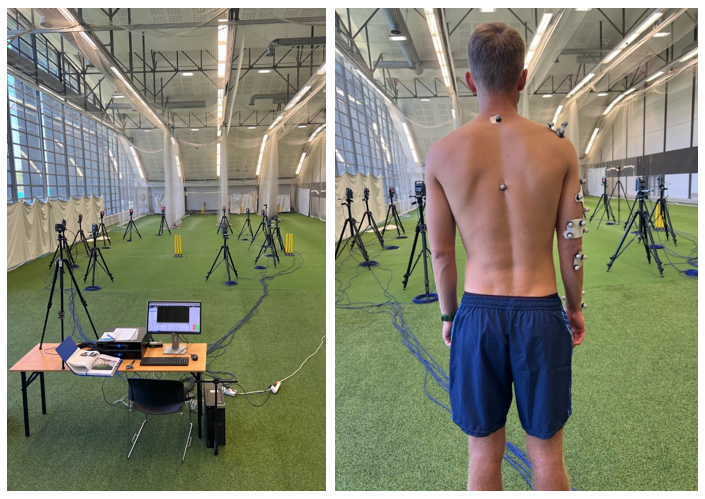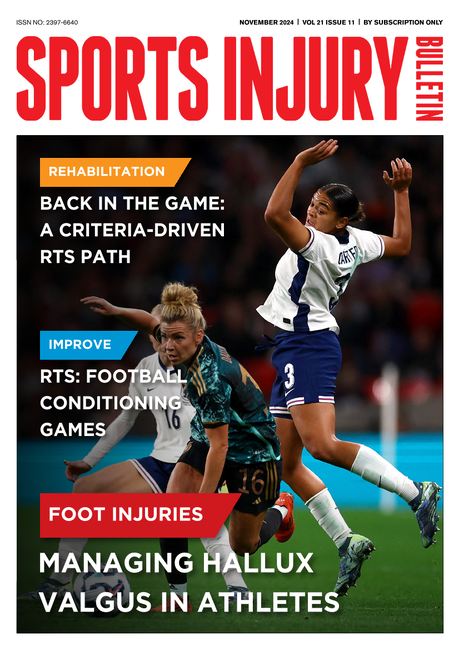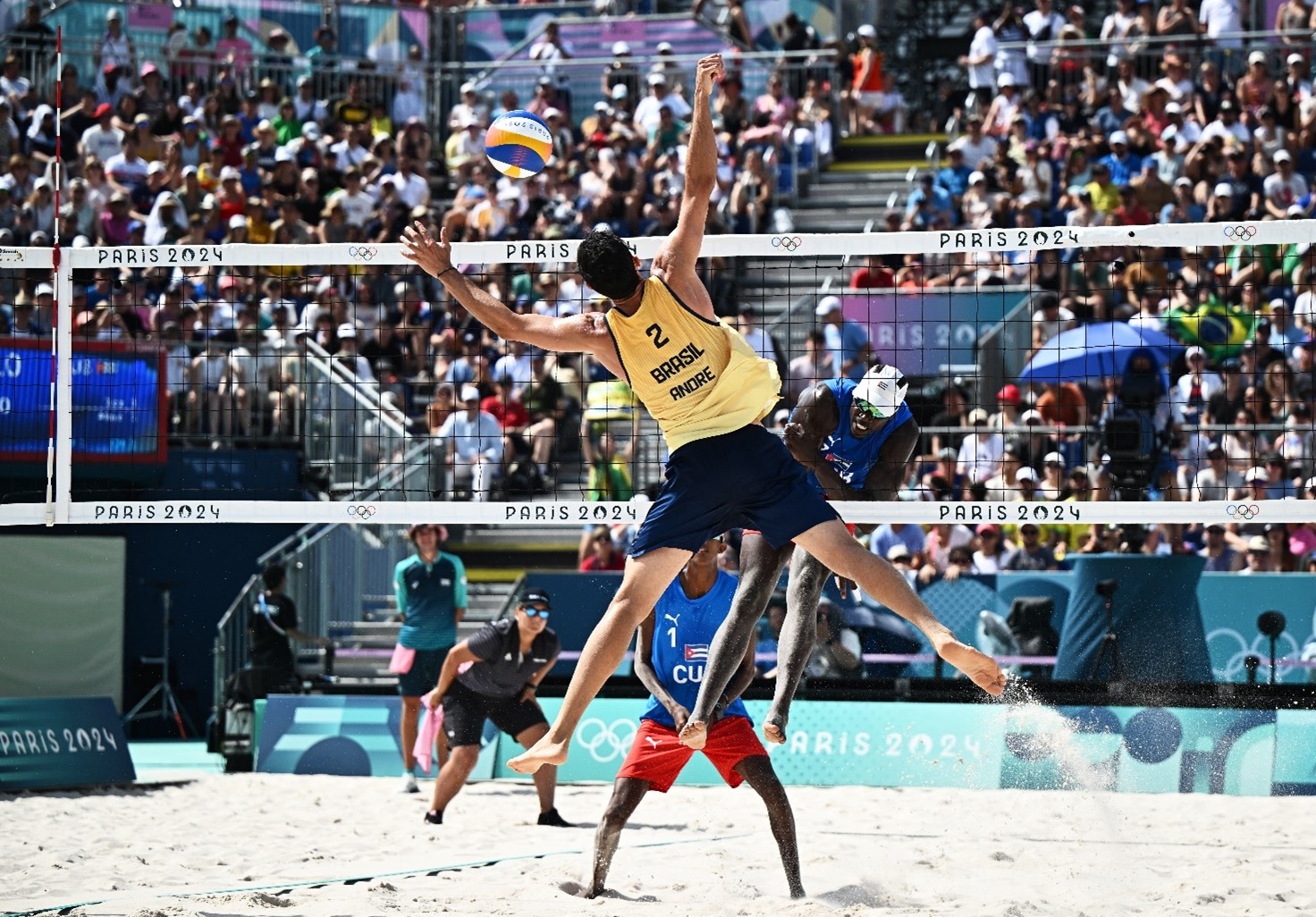You are viewing 1 of your 1 free articles
Kinematic Motion Analysis: Part Two
Understanding the intricacies of athletes’ biomechanics is paramount for sports injury prevention and performance enhancement practitioners. Kinematic Motion Analysis: Part One discusses using 2D motion analysis in the athletic realm. In Part Two, Candice MacMillan provides an overview of the differences and uses of 3D motion analysis.
Angel City FC forward Sydney Leroux and North Carolina Courage midfielder Denise O’Sullivan battle for the ball in the second half at BMO Stadium. Mandatory Credit: Kiyoshi Mio-USA TODAY Sports
Over the years, optical motion capture systems (OMCS) have been the cornerstone of biomechanical analysis. However, recent advancements, particularly with the introduction of Inertial Measurement Units (IMUs) and markerless motion capture, provide practitioners with alternative tools that offer increased portability and cost-effectiveness. Inertial Measurement Units are valid alternatives to optical motion capture systems for kinematic analysis in different sports(1,2). Furthermore, IMUs are practical tools, particularly in sports settings where portability and ease of use are paramount. Markerless motion capture, a revolutionary technology in biomechanics, eliminates the need for physical markers attached to the subject’s body, offering a non-invasive and flexible approach to capturing human movement. This article delves into utilizing IMUs, OMCS, and markerless motion capture for sports injury prevention and performance enhancement.
IMUs vs. OMCS: A Practical Comparison
In biomechanical analysis within athletic contexts, distinguishing between OMCS and IMU technologies is essential. For example, OMCS relies on high-speed cameras to track reflective markers on an athlete’s body, enabling precise motion capture with exceptional spatial accuracy (see figure 1)(2,3). Conversely, IMUs utilize gyroscopes and accelerometers, with or without magnetometers, embedded in wearable devices to record motion data, offering the advantage of portability and flexibility in various environments (see figure 2)(1,4).

The primary distinction lies in their respective strengths and limitations (see table 1). Optical motion capture systems excels in capturing intricate movements with fine detail, particularly in controlled laboratory settings, while IMU systems offer greater mobility and feasibility for real-world applications such as field sports(1,4). Despite these variances, both methodologies significantly contribute to understanding biomechanical principles in athletic performance. A comprehensive integration of these technologies can provide a multifaceted perspective on movement mechanics, enhancing training protocols and injury prevention strategies.

Table 1: Advantages and disadvantages of optical motion capture methods and inertial measurement units
| 3D Motion Capture Method | Advantages | Disadvantages |
| Optical Motion Capture |
|
|
| Inertial Measurement Units |
|
|
3D Motion Analysis for Injury Prevention
Utilizing IMUs and OMCS presents a promising avenue for injury prevention in sports. For example, IMUs are effective in preventing ACL injuries through real-time monitoring of biomechanical parameters during dynamic movements, such as cutting and jumping(5). Similarly, OMCS reduces the risk of ankle sprains by analyzing athletes’ gait patterns and foot positioning during dynamic activities(6). Furthermore, among female soccer players, clinicians can use preseason biomechanical testing with dimension-reduction techniques to monitor injury risk(7).
By integrating data from IMUs and optical motion systems, coaches and sports medicine professionals can identify biomechanical deficiencies associated with specific injuries, such as ACL tears and ankle sprains, and implement targeted interventions to mitigate injury risk. Furthermore, the real-time feedback these technologies provide enables athletes to adjust their movement patterns and adopt safer techniques, reducing the likelihood of sustaining injuries during training and competition.
3D Motion Analysis for Performance
Utilizing IMUs and OMCS presents a transformative approach to enhancing athletic performance across various sports. By integrating data from IMUs and OMCS, athletes and coaches can gain valuable insights into movement mechanics and performance metrics, empowering them to refine techniques and ultimately achieve peak performance in sports ranging from snowboarding to golf and sprinting. Swiss researchers showcase the effectiveness of IMUs in snowboarding, where these devices enable precise tracking of movement patterns and biomechanical parameters during aerial maneuvers and dynamic turns, facilitating skill development and performance optimization(8). Using OMCS to analyze golf swings allows for a detailed assessment of clubhead speed, swing path, and body positioning, leading to tailored coaching interventions and enhanced golf performance(9). In sprinting, the application of IMUs highlights their role in evaluating stride length, ground contact time, and specific body segment acceleration, thereby informing training strategies for improved sprint performance(10).
By integrating data from 3D motion capture systems, athletes and coaches can gain valuable insights into movement mechanics and performance metrics.
Markerless Motion Capture
Through advanced computer vision algorithms and depth-sensing cameras, markerless motion capture systems track the motion of anatomical landmarks and joints in real time, reconstructing three-dimensional skeletal models with remarkable accuracy(11,12). This technology has garnered significant attention across various domains, including sports performance analysis and clinical gait assessment(11,13). In sports biomechanics, markerless motion capture enables researchers and practitioners to analyze athletes’ movements with high precision, providing insights into technique refinement, injury prevention, and performance optimization. For example, markerless motion capture is effective in track and field events, such as jumping and sprinting, by accurately tracking athletes’ kinematics during dynamic movements(11). Moreover, they offer the advantage of capturing movement data in naturalistic settings without the constraints imposed by physical markers, thus allowing for more ecologically valid assessments of sports performance(12).
In clinical settings, markerless motion capture is instrumental in assessing gait abnormalities and motor impairments, aiding in diagnosing and rehabilitating musculoskeletal disorders(12). Despite its numerous advantages, these systems are not without limitations. Challenges such as occlusions, environmental factors, and computational requirements can affect the accuracy and reliability of motion tracking. However, advancements in computer vision algorithms and sensor technology continue to address these challenges, enhancing the capabilities and applicability of markerless motion capture in various fields.
Challenges and Future Directions
Despite significant strides made in biomechanical analyses, challenges persist. Integrating multiple data sources, standardizing analysis protocols, and leveraging emerging technologies such as machine learning and artificial intelligence present ongoing challenges for practitioners. Interdisciplinary collaboration among sports scientists, engineers, and medical professionals is crucial in overcoming these challenges and developing holistic approaches to sports injury prevention and performance enhancement.
Conclusion
Advancements in biomechanical analysis techniques have revolutionized sports science, offering practitioners innovative solutions to injury prevention and performance enhancement. Although optical motion capture systems remain the gold standard, IMUs and markerless motion capture have emerged as promising alternatives, offering increased portability and cost-effectiveness without compromising data validity. Continued exploration and refinement of these technologies and interdisciplinary collaboration will advance our understanding of athlete biomechanics and optimize sports performance while minimizing injury risks.
References
1. Physiotherapy. 2012;98(3):256-259
2. Retos. 2017;(32):241-247
3. Am J Sports Sci Med. 2020;8(2)
4. Proc Inst Mech Eng Part P J Sports Eng Technol. 2021;235(1):3-12
5. J Sci Med Sport. 2015;18(3):238-244
6. J Athl Train. 2008;43(3):293-304
7. Sci Med Footb. 2023;7(2):183-188. 8
8. J Biomech. 2008;41(5):1029-1035
9. Int J Sports Med. 2008;29(6):487-493
10. Gait Posture. 2019;73:26-38
11. Scand J Med Sci Sports. 2023;33(6):966-978
12. PeerJ. 2022;10:e12995
13. J Biomech. 2021;127:110665
Newsletter Sign Up
Subscriber Testimonials
Dr. Alexandra Fandetti-Robin, Back & Body Chiropractic
Elspeth Cowell MSCh DpodM SRCh HCPC reg
William Hunter, Nuffield Health
Newsletter Sign Up
Coaches Testimonials
Dr. Alexandra Fandetti-Robin, Back & Body Chiropractic
Elspeth Cowell MSCh DpodM SRCh HCPC reg
William Hunter, Nuffield Health
Be at the leading edge of sports injury management
Our international team of qualified experts (see above) spend hours poring over scores of technical journals and medical papers that even the most interested professionals don't have time to read.
For 17 years, we've helped hard-working physiotherapists and sports professionals like you, overwhelmed by the vast amount of new research, bring science to their treatment. Sports Injury Bulletin is the ideal resource for practitioners too busy to cull through all the monthly journals to find meaningful and applicable studies.
*includes 3 coaching manuals
Get Inspired
All the latest techniques and approaches
Sports Injury Bulletin brings together a worldwide panel of experts – including physiotherapists, doctors, researchers and sports scientists. Together we deliver everything you need to help your clients avoid – or recover as quickly as possible from – injuries.
We strip away the scientific jargon and deliver you easy-to-follow training exercises, nutrition tips, psychological strategies and recovery programmes and exercises in plain English.











